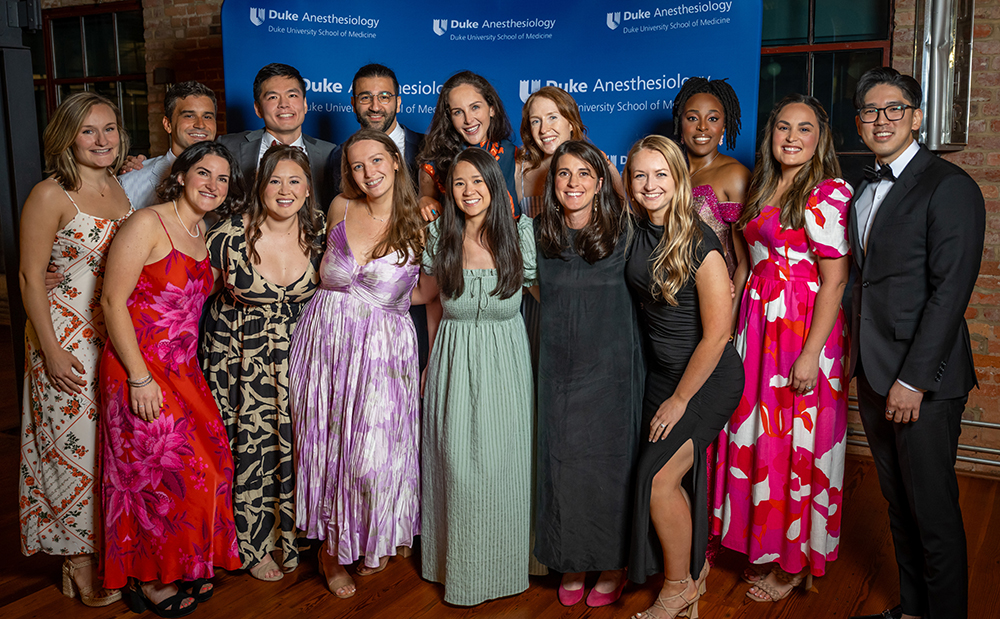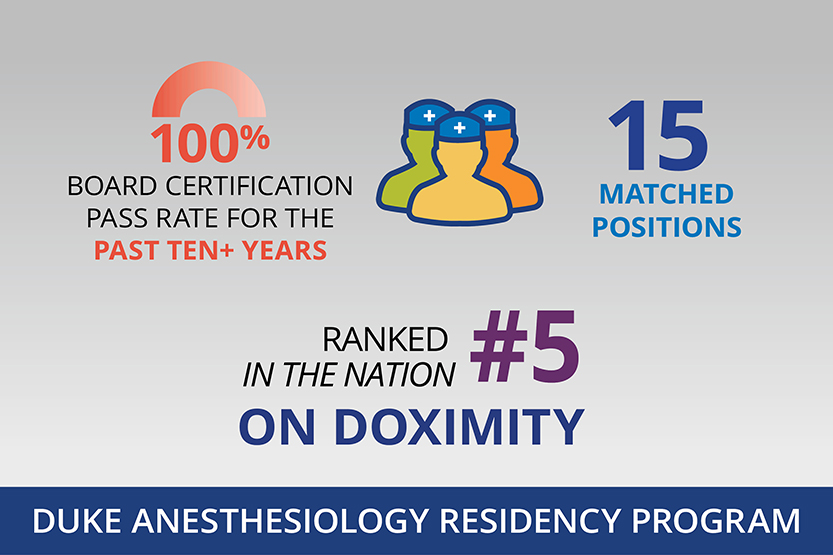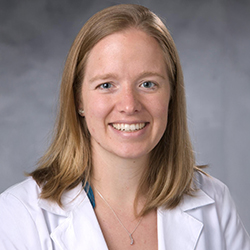
I am truly excited for the opportunity to lead this group of young, bright physicians who shape our identity as a department and community. I look forward to working collaboratively with the residents, department, institution, and our leadership to further drive excellence and growth in our anesthesiology residency program. Together, we will advance the field of anesthesiology and enhance the perioperative experience for patients and their families.
- Brandi A. Bottiger, MD, Residency Program Director
Duke Anesthesiology boasts some of the finest faculty in the country, including worldwide-recognized leaders in anesthesiology practice and research. Our faculty are not only dedicated to recruiting the best and the brightest minds in medicine, they are extremely engaged with resident education and career development. They are a vital component of our nationally-acclaimed Duke Anesthesiology Residency Program which equips our residents with the skills to work with a variety of patient cases and change the world around them, as described by some of our department’s leaders and trainees in the program highlight video (above).
Interns rotate on a variety of services, including Acute Pain Service and Perioperative Medicine, and are able take advantage of the expertise of other Duke departments while developing fundamental clinical skills. CA-1 residents begin building their basic anesthesiology knowledge and start subspecialty training that develops through their CA-2 year. CA-3 residents are able to tailor their final year of training toward their career ambitions and have the opportunity to engage in research projects. In addition to intraoperative and bedside teaching, Duke Anesthesiology offers a strong didactic program for trainees. Each lecture series is organized by faculty leaders to ensure that content is up to date and provides residents the knowledge they need to become world-class anesthesiologists. Trainees have the opportunity to evaluate the lectures and provide feedback to presenters to help ensure the sessions are relevant to the needs of learners. Consequently, our residents are very confident in their ability to work independently in any setting once they graduate from the program.
The Duke Anesthesiology Residency Program’s notable rankings extend beyond our hospital walls and medical campus. The city of Durham is named “North Carolina’s Hippest City” and is ranked the #1 Greatest Basketball Town to Visit, the #1 Tastiest Town in the South, the #8 Best College Town, the #3 Best Place to Live in the United States and the #6 Smartest City in America, among other accolades. Visit our “Why Durham?” webpage to learn more about why “The City of Medicine” is a great place to live and train!
Let's Get Social!
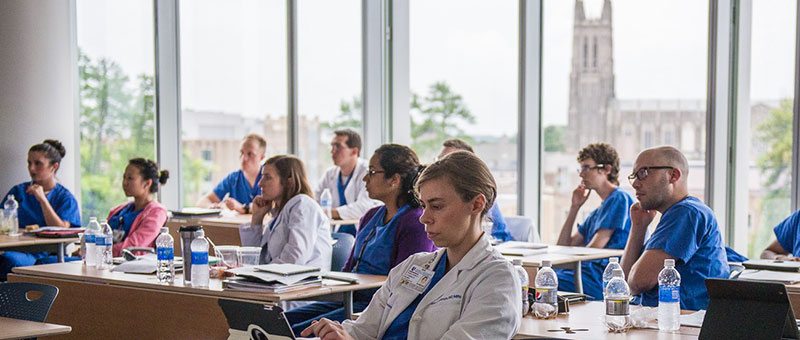
How many positions do you offer?
Typically, we offer 14-15 positions in the Match. One to two positions are reserved for our Academic Career Enrichment Scholars (ACES) Program, a separate NRMP-matched program to support and accelerate the next generation of anesthesiology clinician-scientists. We are approved for a “Reserved” or “R” position; please contact us if you are interested in this position. Applicants may specify any or all tracks when they apply through the Electronic Residency Application Service (ERAS). Interview offers are not based upon applications to a specific track. After applicant interviews, we will determine track preferences. Applicants may declare or change their preferences up until the time that we submit our lists. Information regarding Duke Graduate Medical Education can be found at https://gme.duke.edu.
I am completing a residency currently and am interested in starting as a CA1 in July. Is this possible?
Please contact us with your information.
How do I apply?
We accept applications through ERAS.
Additionally, we use the Residency Central Application as a supplement to ERAS. The CentralApp was started as a free alternative to ERAS in plastic surgery 3 years ago and it is now used specialty wide. We are among the first programs to trial this platform in anesthesiology. We hope that in future years, CentralApp will remove the financial barriers created by progressive application fee structures. There is no cost to use the CentralApp and you can apply to as many programs as you like. In addition, as you will see from the questions, CentralApp also promotes holistic application review by focusing on quality application content rather than quantity.
Upon accessing the platform, you will be instructed to create a secure account and will be able to request letters of recommendation, transcripts, and MSPE (Dean's Letters) directly through the portal. The Match will remain with the National Residency Matching Program (NRMP). Please direct any questions about the application to HELP@accessgme.com.
Our application requirements are the same as the standard ERAS application: the complete application, CV, personal statement, medical student performance evaluation (dean’s letter), transcript, and three letters of recommendation. We require Step 1 and Step 2 USMLE scores of all applicants. Step 2 may be completed after the application deadline but must be submitted before ranking in February. Successful completion of USMLE Step 1 and of Step 2 CK is required by Duke University Hospital prior to matriculation.
We abide by the Duke Graduate Medical Education (GME) policy on licensing examinations, with the added stipulation that we require passage of the USMLE Step 3 before starting the CA-1 year.
What tracks do you offer and how many positions?
To complete your ERAS application, you can choose one track or any combination of tracks. For our purposes, these choices are not a binding commitment. If you are invited to interview, you will find out more about each track, and we will ask your track preference before our Match list is submitted.
What are the requirements for international medical graduates?
We have a minimum USMLE cutoff score of 225 on all parts of the exam. IMGs must be ECFMG certified to be considered for an interview. We require some U.S. clinical experience. Observerships do not meet this requirement. We do not have a timeframe for graduation from medical school; we are more interested in what you have done in the time since graduating. Applications are accepted only through ERAS.
I submitted four letters of recommendation. Is that too many?
ERAS allows you to upload up to four letters of recommendation. We consider a complete application to include three letters of recommendation. If you have four, that is fine.
Where can I send questions for the residency program director and assistant directors?
You can submit your questions via email at anesthesiologyresidency@duke.edu.
Other questions?
Please contact us with any questions you may have. You may also refer to the Fellowship and Residency Electronic Interactive Database.
At all levels, leadership, faculty, staff and the residents themselves raise the bar to bring the highest level of dedication and commitment to the Duke Anesthesiology Residency Program.

Director, Residency Program
Associate Professor of Anesthesiology
The department welcomed Dr. Brandi Bottiger, associate professor of anesthesiology, to her new role as residency program director in May of 2025. She succeeds Dr. Annemarie Thompson, who was appointed Duke Anesthesiology's vice chair for education in April of 2024 after serving as residency program director for nearly 11 years. As a Duke Anesthesiology alumnus and award-winning educator, Bottiger brings 14 years of experience to her position in which she will lead and mentor approximately 60 future health care leaders within our acclaimed program. For nearly the past decade, she has served as the department’s Adult Cardiothoracic Anesthesiology Fellowship director and in 2019, became the first anesthesiologist to hold a medical directorship position within the transplant center at the Duke University Health System. Bottiger is a visionary leader who will continue to advance the innovative, clinically rigorous, and supportive residency program through robust mentorship and unparalleled clinical and educational experiences.
As Duke Anesthesiology Residency Program alumna, our assistant program directors bring a wealth of firsthand experience and understanding of our program's curriculum and values, and our department's and institution's commitment to excellence. Together, they serve as an integral part of the residency program’s leadership team, assisting with resident advising and mentoring, and enhancement of the clinical and educational environment of the program.
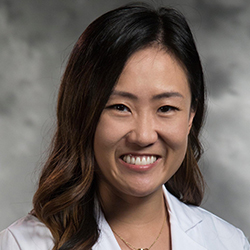
Assistant Residency Program Director
Assistant Professor of Anesthesiology
Angela Pollak, MD, is an assistant professor of anesthesiology in the Cardiothoracic Anesthesiology Division and serves as assistant program director. Dr. Pollak obtained her BA in biochemistry from Washington University in St. Louis and taught in a charter high school serving low-income students in Boston before going on to receive her medical degree from Weill Cornell Medical School in New York. In 2018, Dr. Pollak completed her anesthesiology residency here at Duke in which she served as chief resident. That same year, she was selected to participate in the Feagin Leadership Program, designed to foster the development and training of future academic leaders. She went on to complete Duke’s Adult Cardiothoracic Anesthesiology Fellowship where she served as a chief administrative fellow.
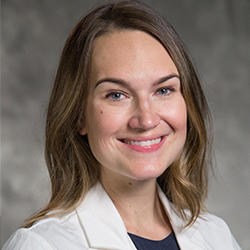
Assistant Residency Program Director
Assistant Professor of Anesthesiology
Sarah Cotter, MD, is an assistant professor of anesthesiology in the Cardiothoracic Anesthesiology Division and serves as assistant program director. Dr. Cotter is an alumna of Duke University. She received her medical degree from the University of North Carolina, Chapel Hill and returned to Duke to complete an anesthesiology residency (Class of 2019) in which she served as a chief resident. That same year, she was selected to participate in the Feagin Leadership Program. Dr. Cotter went on to complete an adult cardiothoracic anesthesiology fellowship at Brigham and Women's Hospital in Boston.
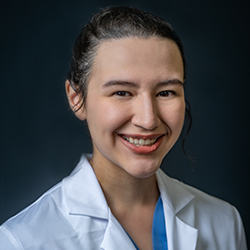
Welcome to the Duke Anesthesiology Residency Program
We’re thrilled you’re considering Duke for your anesthesiology training! Our program offers top-of-the-line clinical experience, strong mentorship, and a vibrant resident community—all in the heart of Durham, North Carolina.
World-Class Clinical Training
As a resident, you’ll primarily train at Duke University Hospital, a Level 1 trauma center, with additional rotations at Duke Regional Hospital and the Durham VA Medical Center. You'll care for complex, high-acuity patients while gaining experience in diverse settings—from academic to community care.
Duke offers a categorical residency, so your intern year (PGY-1) focuses on building a strong foundation through rotations in internal medicine, surgery, ICU, cardiology, emergency medicine, and more—including time with our anesthesiology teams in inpatient pain, hyperbaric medicine, and the Preoperative Anesthesia and Surgical Screening (PASS) clinic.
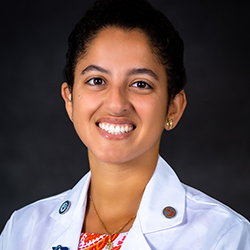
Alongside your clinical training, you will have access to central anesthesiology texts and several question banks, structured faculty mentorship, didactics oriented towards boards content each year, oral boards prep, and simulation.
Seamless Transition to Anesthesia
After intern year, you'll jump into a 3-week OR orientation alongside your co-residents, guided by senior residents, fellows, and faculty. You’ll be paired up with a fellow intern and guided through OR anesthesia by a dedicated faculty member. Starting July 1 of CA-1, you'll be ready to start managing your own cases—with plenty of support every step of the way. You'll build a strong foundation in anesthesia through a wide variety of cases, including general, colorectal, GYN, ortho, obstetric, and ENT.
Advanced Subspecialty Rotations
In CA-2 year, you’ll take on more complex cases and complete subspecialty rotations in:
- Cardiothoracic Anesthesiology
- Critical Care
- Pediatric Anesthesiology
- Neuroanesthesiology
- Regional Anesthesiology
- Vascular Anesthesiology
- Pain Medicine
You’ll also gain hands-on experience with major organ transplants, including liver, lung, and heart. Most residents meet graduation case requirements by the end of this year—and many begin applying to jobs and fellowships, both at Duke and across the country.
Leadership Development
Your CA-3 year is all about leadership and autonomy. You’ll manage ORs, take senior call, supervise junior residents and CRNAs, and lead clinical teams. You’ll also have several months of elective time to focus on subspecialty interests, global health, research, or career prep.
Faculty & Mentorship
Our program is led by Dr. Brandi Bottiger and a dedicated leadership team that values resident feedback and continuous improvement. Duke faculty are passionate educators, researchers, and mentors—eager to support your professional growth in clinical care, education, research, global health, and quality improvement. Residents also receive funding for presentations at academic conferences.
Life in Durham
Durham offers a fantastic quality of life. Enjoy award-winning restaurants, breweries, Durham Bulls baseball games, and live performances at DPAC. Outdoor lovers will appreciate the nearby parks, hiking trails and greenways, and easy access to both mountains and beaches. With Durham being a small southern city, we enjoy low traffic and better cost of living than most of the country. With Raleigh and our international RDU Airport just 30 minutes away, it’s easy to travel abroad or explore locally in North Carolina.
A Diverse, Tight-Knit Community
Our 60 residents come from a wide range of backgrounds and interests—runners, musicians, gamers, parents, researchers, and more. What unites us is a strong sense of community and support. Whether relaxing at a local brewery or swapping stories in the resident lounge, we genuinely enjoy spending time together—both in and out of the hospital.
We hope you’ll take a closer look at Duke Anesthesiology. If you're seeking top-tier training in a welcoming and collaborative environment, we’d love to meet you!
Cheers!
Natasha Navejar, MD | natasha.navejar@duke.edu
Theresa Rizk, MD | theresa.rizk@duke.edu
Where in the World…Are Our Residents From?
The Duke Anesthesiology Residency Program offers a wide variety of learning experiences and resources for trainees including didactics, simulation, and more. This page provides an overview of the resources and educational opportunities available to residents during their four years at Duke.

Residency Didactics
In addition to intraoperative and bedside teaching, Duke Anesthesiology offers a strong didactic program for trainees. Each lecture series is organized by faculty leaders to ensure that content is up to date and provides residents the knowledge they need to become world-class anesthesiologists. Trainees have the opportunity to evaluate the lectures and provide feedback to presenters to help ensure the sessions are relevant to the needs of learners.
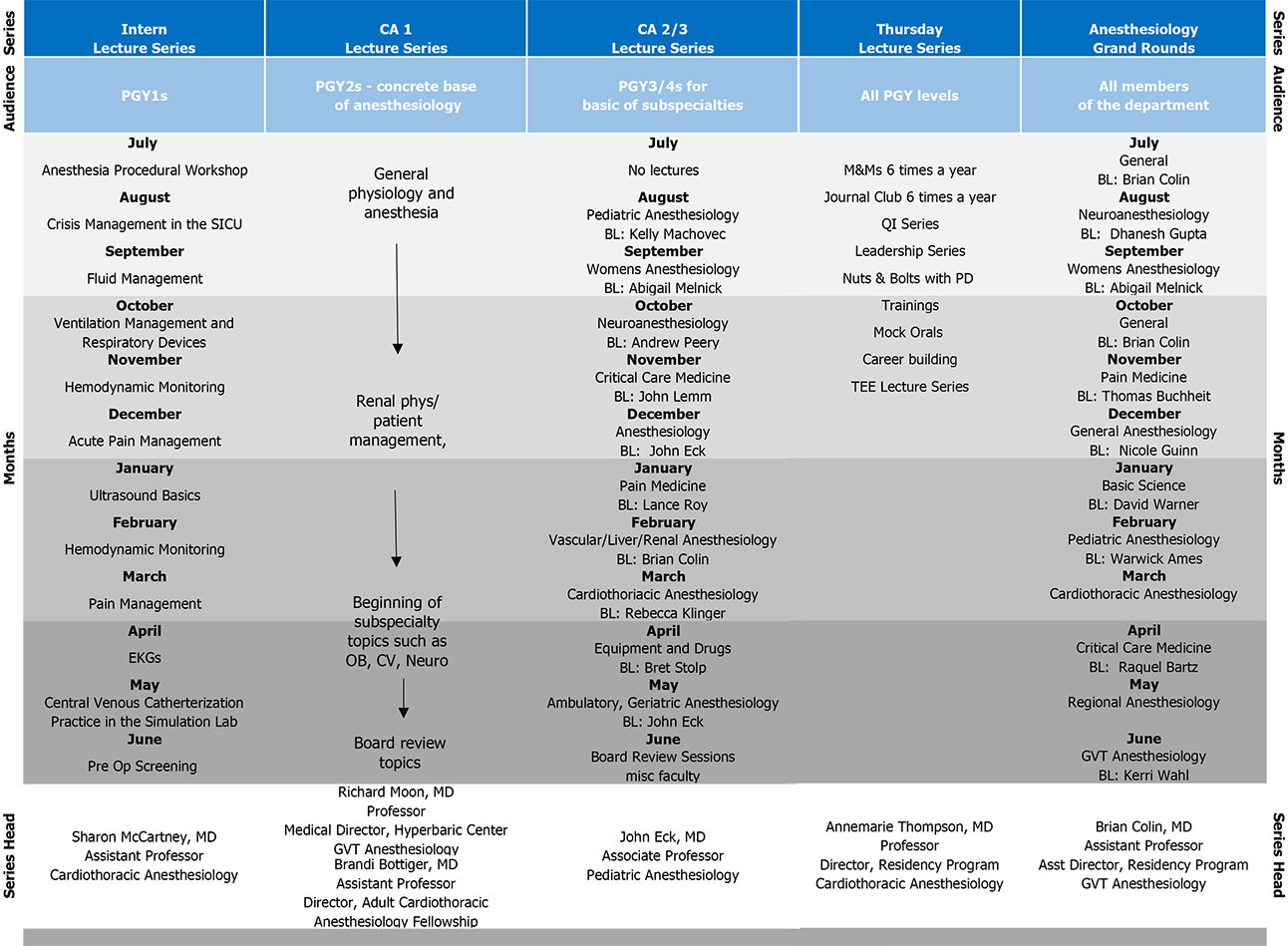
ACGME Anesthesiology Core Requirements: IV A 3: The curriculum must contain didactic instruction through a variety of learning opportunities occurring in a conference setting, in the clinical setting, or online that encompasses clinical anesthesiology and related areas of basic science. Other topics from Internal Medicine that are important for the preoperative preparation of the patient, from surgery as to the nature of the surgical procedure affecting anesthetic care, and from obstetrics that impacts anesthetic management of the patient should be included. The material covered in the didactic program must demonstrate appropriate continuity and sequencing to ensure that residents are ultimately exposed to all subjects at regularly held learning exercises.
Intern Lecture Series
The goal of the intern lecture series is to introduce interns to anesthesiology fundamentals at the beginning of their anesthesiology training. Topics include pre-operative screening, pain management, and ultrasound basics, among others. Lunch is provided for this series that meets once a month on Thursdays from noon to 1:00 p.m.
CA1 Lecture Series: Anesthesiology Fundamentals
This series is designed to build on the intern lecture series by providing trainees a concrete base of anesthesiology as they begin their anesthesiology rotations. Three primary topics are covered over the year:
- General cardio-pulmonary physiology and management
- Renal, hematologic, gastrointestinal and endocrine physiology
- Basics of intraoperative anesthesia management and introductions to subspecialty anesthesia topics (OB, CV, and neuro)
The final portion of the series is devoted to board review topics. This series meets on Tuesday afternoons from 5 – 6 p.m.
CA 2/3 Lecture Series: Subspecialty Anesthesiology
This lecture series is a two-year curriculum that provides advanced residents with in-depth knowledge of anesthesiology subspecialties. Many of these sessions are taught using novel methodologies, including flipped classroom, games, peer-to-peer learning, and case-based discussions.
For many sessions, pre-work is posted online in our course management system. During the live session, residents will participate in active learning activities such as case-based learning, large and small group discussions, and review games in a “Jeopardy” format. This series meets on Wednesdays from 5 – 6 p.m.
All Residents Lecture Series: Thursday Series
The Thursday afternoon lecture series is designed to provide trainees with the knowledge and skills they need to succeed as well-rounded attending anesthesiologists post-training. This series focuses on the following ACGME competencies: practice-based learning and improvement, interpersonal and communication skills, and systems-based practice. During the course of the year, residents will participate in the following activities on Thursday afternoons from 5 – 6 p.m.:
- M&Ms (6x/year)
- Twitter Journal Club (3x/year)
- QI lectures
- Nuts and bolts meetings with residency program leadership
- Leadership development sessions
- Mock orals
- TEE Interactive Series (see TEE below).
Resident TEE Curriculum
The Resident TEE curriculum is a 6-month curriculum for CA-2 and CA-3 residents focused on basic perioperative TEE; including image optimization, recognition of valvular abnormalities, ventricular dysfunction, and hands-on image acquisition.
Simulation
In addition to didactics, Duke Anesthesiology trainees have the opportunity to participate in world-class simulation activities. These sessions use various modalities of simulation, including task trainers for procedural skills as well as high-fidelity mannequins for case-based scenarios. A faculty champion, often division-specific, leads each session. The curriculum is developed and standardized in collaboration with simulation staff to ensure a paramount learning experience for all participants. The chart below reflects simulation-based education for graduate medical education in the Department of Anesthesiology.
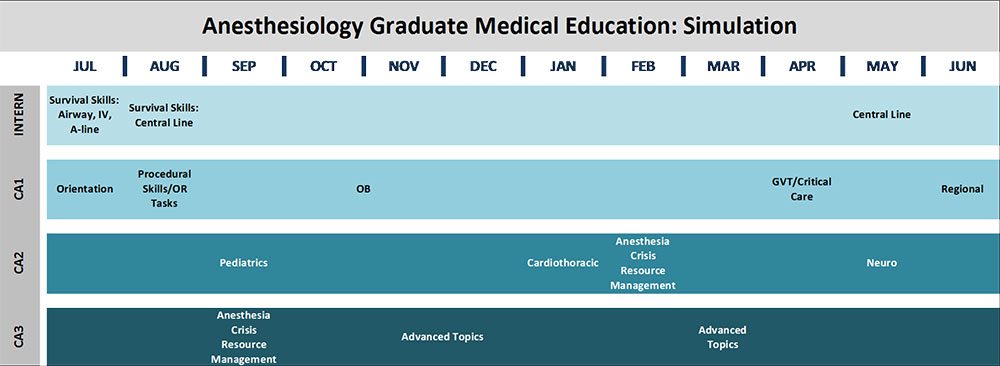
Intern Survival Skills: Procedure-based simulation training including central line, airway management, and IV placement led by Dr. Sharon McCartney.
Subspecialty Case-based Scenarios: Organized by Dr. John Eck, these regular sessions rotate CA-1, CA-2, and CA-3 learners through cases created by champions in each subspecialty.
Anesthesia Crisis Resource Management (ACRM): Complex case-based scenarios that challenge CA-2 and CA-3 learners with crisis resource management-focused debriefings. The course originated with Dr. Ankeet Udani.
Education Highway
Trainees have access to the Education Highway, an online departmental repository for learning materials. This tool provides opportunities for self-directed learning in addition to supporting the flipped lectures. Each division has a space, curated by a faculty member with expertise in that area, to house educational videos, significant papers, protocols, and other learning materials. Each week, a recording of the departmental Grand Rounds lecture is posted for viewing by those unable to attend.
Advising and Coaching
Each resident has the opportunity to choose a faculty adviser. In addition to the support provided by the resident’s adviser and residency program leadership, the department’s PhD educator, Ashley Grantham, is also available for individual educational coaching.
Other Resources
The following individuals are available to answer questions about the educational opportunities available in the department for trainees:
Brandi A. Bottiger, MD
Director, Anesthesiology Residency Program
Associate Professor of Anesthesiology
Angela Pollak, MD
Assistant Director, Anesthesiology Residency Program
Assistant Professor of Anesthesiology
Sarah Cotter, MD
Assistant Director, Anesthesiology Residency Program
Assistant Professor of Anesthesiology

Residents in the Duke University Department of Anesthesiology have endless opportunities to involve themselves in research. All subspecialty divisions within the department are academically productive, with nearly all research faculty actively managing multiple simultaneous projects. For those interested in basic science, our division boasts several productive laboratories investigating pain, myocardial ischemia/reperfusion injury, neuroprotection, and the role of G-protein coupled receptors in human disease.
The Department of Anesthesiology is also fortunate to have unparalleled support for clinical research (Clinical Research Unit or CRU), allowing straightforward design and conduct of complex and unique clinical investigations. While participation in research is not required, resident research collaboration is both important and universally appreciated by investigators. Residents are encouraged to attend research meetings when their training schedule allows. Furthermore, residents presenting at national meetings typically receive departmental financial support for travel, board, meals, and attendance. For residents who are interested in a research-focused career, the residency training program offers two ACES positions annually. Please refer to the ACES program section of the website for more information.
General Research About the Department
Mandatory Rotations
| Department | Rotation | Location |
|---|---|---|
| Anesthesiology 2-3 months |
Clinical Anesthesiology Acute Pain Service Perioperative Medicine |
DUMC DUMC DUMC |
| Medicine 4-5 months |
General Medicine Cardiology Cardiology Consults Hyperbaric & Undersea Medicine* Pulmonary Medicine |
DRH DUMC DUMC DUMC DUMC |
| Emergency Department 1 month |
Emergency Medicine | DUMC |
| Pediatrics 1-2 months |
General Pediatric Wards Pediatric ICU |
DUMC DUMC |
| Surgery 2 months |
Surgical ICU* General Surgery |
VA DRH |
*Managed by the Department of Anesthesiology
DUMC=Duke University Medical Center
DRH=Duke Regional Hospital
VA=Durham Veterans Affairs Medical Center
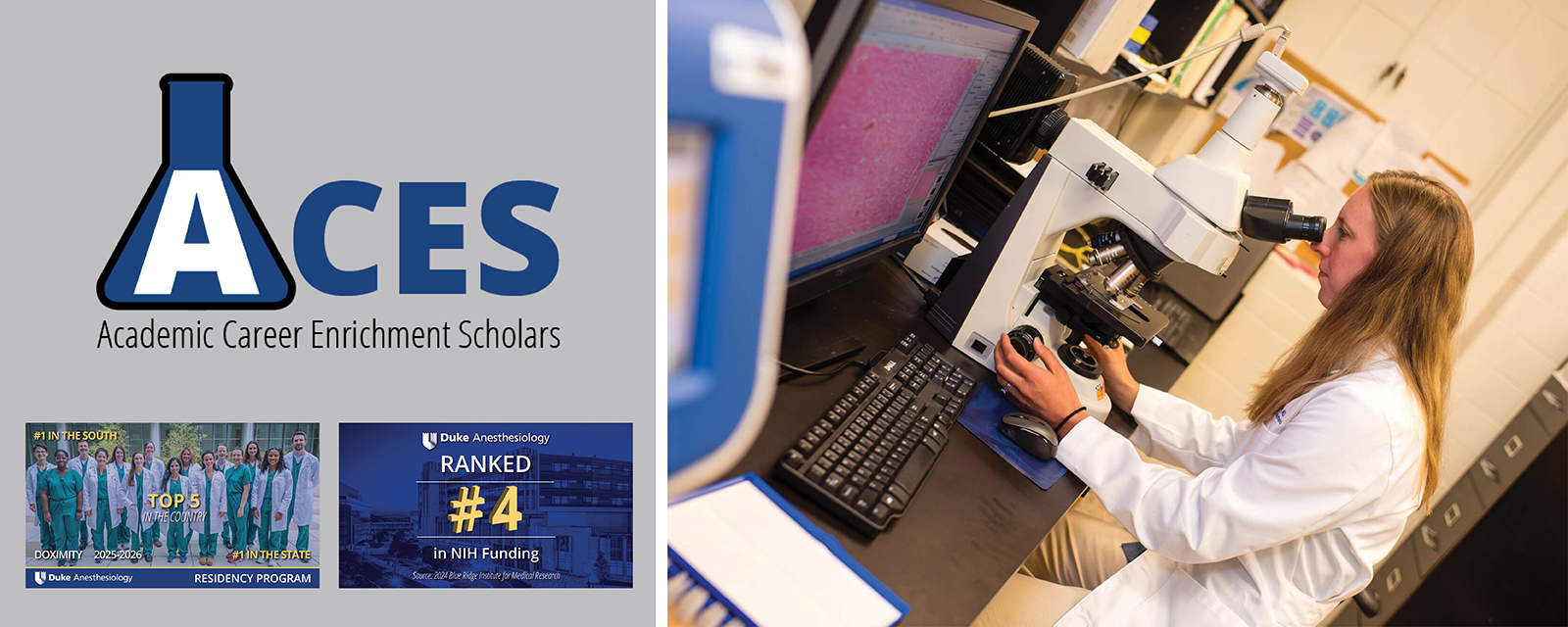
Duke Anesthesiology created the Academic Career Enrichment Scholars (ACES) Program in 2007 to integrate advanced clinical and research training without prolonging the duration of the traditional residency and fellowship system. This innovative curriculum program is a highly-selective resident research track designed to increase the number of graduates pursuing academic careers and help them gain status as independently-funded researchers. It matches up to two residents per year. Since 2007, roughly 25 trainees have graduated from the ACES Program or are currently in the program. To date, ACES residents have brought in more than $26 million in extramural funding, have published more than 423 peer-reviewed papers, and 22 of 24 graduates (91%) remain in academic anesthesiology.
PubMed-Indexed Education Focused Publications 2017-2022
2022 (5 papers + 3 submitted)
- Kumar AH, Sultan E, Mariano ER, Udani AD A modern roadmap for the use of simulation in regional anesthesiology training Curr Opin Anaesthesiol 2022 Oct 1;35(5):654-659. doi: 10.1097/ACO.0000000000001179. Epub 2022 Aug 4. PMID: 35942715
- Berger M, Eleswarpu SS, Cooter Wright M, Ray AM, Wingfield SA, Heflin MT, Bengali S, Udani AD. Developing a Real-Time Electroencephalogram-Guided Anesthesia-Management Curriculum for Educating Residents: A Single-Center Randomized Controlled Trial. Anesth Analg 2022 Jan 1;134(1):159-170. doi: 10.1213/ANE.0000000000005677. PMID: 34709008; PMCID: PMC8678191.
- Zisblatt L, Chen F, Dillman D, DiLorenzo AN, MacEachern MP, Juve AM, Peoples EE, Snarskis C, Grantham AE. Critical Appraisal of Anesthesiology Educational Research for 2019. J Educ Perioper Med 2022 Apr 1;24(2):1-21. doi: 10.46374/volxxiv_issue2_zisblatt. PMID: 36051403; PMCID: PMC9426260.
- Nasr VG, Ambardekar A, Grant S, Edgar L, Gross C, Mcloughlin T, Stafford-Smith M, Suresh S, Deutsch N. Evolution of accredited pediatric cardiac anesthesiology fellowship training in the United States: A step in the right direction. (In press Anesth Analg).
- Effectiveness of Simulation versus Didactic Video-based Learning to Teach Advanced Lung Isolation Techniques Mamoun N, Bottiger B, Wright MC, Klinger R, Grantham A, Stolp B, Bustamante S, Stafford-Smith M (accepted to J Cardiovasc Thorac Anesth)
- Artificial Intelligence-aided vs. Traditional Cardiac Point-of-Care Ultrasound Education: Preliminary Comparison among Obstetric Anesthesiologists Johnson II SB, Feldman SCG, Gessouroun RM, Fuller M, Stafford-Smith M, Bronshteyn Y, Meng M-L (submitted to Anesth Analg Case Reports)
- Brinker V, Lodgek E, Johnson S, McNeil A, Culp C, Grantham A, Blitz J. Implementation of Shared Decision-Making Conversations in the Preoperative Evaluation Clinic: Developing an Education Curriculum and Improving Quality. (submitted to Perioperative Care and Operating Room Management)
- Zisblatt L, Chen F, Dillman D, DiLorenzo AN, MacEachern MP, Juve AM, Peoples EE, Snarskis C, Grantham AE. Critical Appraisal of Anesthesiology Educational Research for 2020. J Educ Perioper Med. (in preparation)
2021 (8 papers)
- Tanaka P, Park YS, Roby J, Ahn K, Kakazu C, Udani A, Macario A. Milestone Learning Trajectories of Residents at Five Anesthesiology Residency Programs. Teach Learn Med. 2021 Jun-Jul;33(3):304-313. doi: 10.1080/10401334.2020.1842210. Epub 2020 Dec 17. PMID: 33327788.
- Gunasingha RM, Knudsen N, Scialla T, Shepherd A, Clay A. Vital Conversations: An Interactive Conflict Resolution Training Session for Fourth-Year Medical Students. MedEdPORTAL. 2021 Jan 25;17:11074. doi: 10.15766/mep_2374-8265.11074. PMID: 33511271; PMCID: PMC7830754.
- Gagliardi JP, Bonanno B, McPeek Hinz ER, Musser RC, Knudsen NW, Palko M, McNair F, Lee HJ, Clay AS. Implementation of Changes to Medical Student Documentation at Duke University Health System: Balancing Education With Service. Acad Med. 2021 Jun 1;96(6):900-905. doi: 10.1097/ACM.0000000000003729. PMID: 32909999.
- Sharpe EE, Ku C, Malinzak EB, Kraus MB, Chandrabose R, Hartlage SEH, Hanson AC, Schulte PJ, Pearson ACS. A cross-sectional survey study of United States residency program directors' perceptions of parental leave and pregnancy among anesthesiology trainees. Can J Anaesth. 2021 Oct;68(10):1485-1496. doi: 10.1007/s12630-021-02044-9. Epub 2021 Jun 22. PMID: 34159567; PMCID: PMC8419093.
- Sharpe EE, Ku C, Malinzak EB, Kraus MB, Chandrabose R, Hartlage SEH, Hanson AC, Schulte PJ, Pearson ACS. A cross-sectional survey study of United States residency program directors' perceptions of parental leave and pregnancy among anesthesiology trainees. Can J Anaesth. 2021 Oct;68(10):1485-1496. doi: 10.1007/s12630-021-02044-9. Epub 2021 Jun 22. PMID: 34159567; PMCID: PMC8419093.
- Kuhn CM, Newton RC, Damewood MD, Zaidan JR, Wagner R, Koh NJ, Weiss KB. New CLER Insights Into the Operative and Procedural Areas of Clinical Learning Environments. J Grad Med Educ. 2021 Apr;13(2):301-302. doi: 10.4300/JGME-D-21-00210.1. Epub 2021 Apr 16. PMID: 33897970; PMCID: PMC8054587.
- Acker L, Bova Campbell K, Naglee C, Taicher B, Bronshteyn YS. Perioperative Management of Flecainide: A Problem-Based Learning Discussion. A A Pract. 2021 Apr 1;15(4):e01443. doi: 10.1213/XAA.0000000000001443. PMID: 33793430.
- Joo SS, Mariano ER, Neal JM, Weinberg GL, Kou A, Hunter OO, Harrison TK, Udani AD, Howard SK. Pilot study to correlate objective eye-tracking data with timed subjective task completion using five local anesthetic systemic toxicity cognitive aids. Reg Anesth Pain Med, 2021 April 9. PMID: 33837138
2020 (8 papers + 1 chapter)
- Zisblatt L, Grantham AE, Dillman D, DiLorenzo AN, MacEachern MP, Juve AM, Peoples EE, Chen F. Critical Appraisal of Anesthesiology Educational Research for 2018. J Educ Perioper Med. 2020 Jan 1;22(1):E637. PMID: 32432152; PMCID: PMC7219027.
- Kumar AH, Udani AD, Mariano ER. The future of education in anesthesiology is social. Int Anesthesiol Clin. 2020 Fall;58(4):52-57. doi: 10.1097/AIA.0000000000000287. PMID: 32804872.
- Thamman R, Desai T, Wiener DH, Swaminathan M. #ASEchoJC Twitter Journal Club To CME: A Paradigm Shift in Cardiology Education. J Am Soc Echocardiogr. 2020 Mar;33(3):A29-A35. doi: 10.1016/j.echo.2020.01.003. PMID: 32143783.
- Tanaka P, Park YS, Liu L, Varner C, Kumar AH, Sandhu C, Yumul R, McCartney KT, Spilka J, Macario A. Assessment Scores of a Mock Objective Structured Clinical Examination Administered to 99 Anesthesiology Residents at 8 Institutions. Anesth Analg. 2020 Aug;131(2):613-621. doi: 10.1213/ANE.0000000000004705. PMID: 32149757.
- Yi PK, Gohil S, Kitt A. Applying to Pain Fellowships in the Time of COVID-19. Pain Med. 2020 Aug 1;21(8):1728-1729. doi: 10.1093/pm/pnaa172. PMID: 32524137; PMCID: PMC7313763.
- Tan C, Kuhn C, Anderson J, Borun A, Turner DA, Whalen K, Shah K. Improving Well-Being Among Trainees: A Partnership to Reduce Barriers to Primary Care Services. J Grad Med Educ. 2020 Apr;12(2):203-207. doi: 10.4300/JGME-D-19-00520.1. PMID: 32322354; PMCID: PMC7161318.
- Tanaka P, Park Y, Roby J, Ahn K, Kakakzu C, Udani AD, Macario M. Milestone learning trajectories of residents at five anesthesiology residency programs. Teach Learn Med, 2020 Dec 17:1-10. PMID: 33327788
- Bunning T, Goodwin M, Barney E, Thakkar A, Clay AS. The Duke Hotspotting Initiative Provides Early Meaningful Clinical Experiences and Improves Clinical Readiness for First-Year Medical Students: A Novel Elective Clinical Curriculum. Academic Medicine 2020 (95), 1707-1711
- Kumar A, Udani AD: Subspecialties of Anesthesiology: Simulation in Regional Anesthesia. In: Comprehensive Textbook of Healthcare Simulation: Anesthesiology Edition. Springer 2020: 257-264.
2019 (10 papers)
- Zisblatt L, Chen F, Dillman D, DiLorenzo AN, MacEachern MP, Miller Juve A, Peoples EE, Grantham AE. Critical Appraisal of Anesthesiology Educational Research for 2017. Cureus. 2019 Jun 5;11(6):e4838. doi: 10.7759/cureus.4838. PMID: 31410321; PMCID: PMC6684110.
- Grantham A, Hauck J, Stafford-Smith M, Mathew JP, Thompson A. Implementation of an Innovative Residency Leadership Development Curriculum. A A Pract. 2019 Apr 1;12(7):252-255. doi: 10.1213/XAA.0000000000000952. PMID: 30648992.
- Jaremko KM, Schwenk ES, Pearson ACS, Hagedorn J, Udani AD, Schwartz G, Elkassabany NM, Snively A, Mariano ER. Teaching an old pain medicine society new tweets: Integrating social media into continuing medical education. Korean J Anesthesiol. 2019 Oct;72(5):409-412. doi: 10.4097/kja.19261. Epub 2019 Jul 1. PMID: 31257816; PMCID: PMC6781218.
- Kumar AH, Mariano ER, Udani AD. Medical education research methodology: accuracy and design. Reg Anesth Pain Med. 2019 Feb 13:rapm-2019-100368. doi: 10.1136/rapm-2019-100368. Epub ahead of print. PMID: 30760507.
- Swaminathan M. Lifelong Learning in the Era of Digital Ubiquity: From Empty Classrooms to Full Experiences. J Am Soc Echocardiogr. 2019 Dec;32(12):A19-A20. doi: 10.1016/j.echo.2019.10.005. PMID: 31810513.
- Thompson A, Augoustides JG. Succession Planning for the Fellowship Program Director: Fortune Favors the Prepared. J Cardiothorac Vasc Anesth. 2019 Sep;33(9):2374-2375. doi: 10.1053/j.jvca.2019.05.032. Epub 2019 May 29. PMID: 31230967.
- Kuza CM, Harbell MW, Malinzak EB, Goff KL, Bicket MC, Ifeanyi-Pillette IC, Wong BJ, Khanna AK. Transition to Practice in Anesthesiology: Survey Results of Practicing Anesthesiologists on Their Experience. J Educ Perioper Med. 2019 Apr 1;21(2):E619. PMID: 31988980; PMCID: PMC6972967.
- Freel, S., Gunn, M., Alspaugh, A., Arepally, G., Blobe, G., Hurst, J., Price-Rapoza, M., Grantham, A., Fish, L., Gbadagesin, R. Permar, S. (2019). 3292 Duke Integrated Physician-Scientist Development. Journal of Clinical and Translational Science, 3(S1), 67-68. doi:10.1017/cts.2019.158
- Kumar AH, Mariano ER, Udani AD. Medical education research methodology: Accuracy and design. Reg Anesth Pain Med, 2019 Feb 13 Epub ahead of print. PMID: 30760507
- Jaremko KM, Schwenk ES, Pearson ACS, Hagedorn J, Udani AD, Schwartz G, Elkassabany NM, Snively A, Mariano ER. Teaching an old pain medicine society new tweets: Integrating social media into continuing medical education. Korean J Anesthesiol, 2019 July 1. PMID: 31257816
2018 (7 papers)
- Kumar AH, Howard SK, Udani AD. Tipping the Scales: Prioritizing Mentorship and Support in Simulation Faculty Development. Simul Healthc. 2018 Feb;13(1):72. doi: 10.1097/SIH.0000000000000275. PMID: 29346224.
- Kochar A, Rymer J, Samad Z; Duke Cardiovascular Education Group. Disrupting Fellow Education Through Group Texting: WhatsApp in Fellow Education? J Am Coll Cardiol. 2018 Dec 25;72(25):3366-3369. doi: 10.1016/j.jacc.2018.11.007. PMID: 30573034.
- Turner DA, Bae J, Cheely G, Milne J, Owens TA, Kuhn CM. Improving Resident and Fellow Engagement in Patient Safety Through a Graduate Medical Education Incentive Program. J Grad Med Educ. 2018 Dec;10(6):671-675. doi: 10.4300/JGME-D-18-00281.1. PMID: 30619525; PMCID: PMC6314371.
- McGrath JL, Taekman JM, Dev P, Danforth DR, Mohan D, Kman N, Crichlow A, Bond WF. Using Virtual Reality Simulation Environments to Assess Competence for Emergency Medicine Learners. Acad Emerg Med. 2018 Feb;25(2):186-195. doi: 10.1111/acem.13308. Epub 2017 Oct 11. PMID: 28888070.
- King R, Hanhan J, Harrison TK, Kou A, Howard SK, Borg LK, Shum C, Udani AD, Mariano ER. Using eye tracking technology to compare the effectiveness of malignant hyperthermia cognitive aid design. Korean J Anesthesiol, 2018 May 15. PMID: 29760370
- Hanhan J, King R, Kou A, Howard SK, Borg LK, Shum C, Udani AD, Mariano ER. A pilot project using eye tracking technology to design a standardized anesthesia workspace. Turkish J Anesthesiol, 2018 Dec;46(6):411-415. PMID: 30505602
- Kumar AH, Howard SK, Udani AD. Tipping the scales: Prioritizing mentorship and support in simulation faculty development. Simul Healthc, 2018 Feb;13(1):72. PMID: 29346224
2017 (7 papers)
- Nagler A, Andolsek KM, Rudd M, Kuhn CM. Providing successful faculty development to graduate medical education program directors. Int J Med Educ. 2017 Sep 11;8:324-325. doi: 10.5116/ijme.59a9.73cc. PMID: 28902636; PMCID: PMC5694701.
- Taekman JM, Foureman MF, Bulamba F, Steele M, Comstock E, Kintu A, Mauritz A, Olufolabi A. A Novel Multiplayer Screen-Based Simulation Experience for African Learners Improved Confidence in Management of Postpartum Hemorrhage. Front Public Health. 2017 Sep 26;5:248. doi: 10.3389/fpubh.2017.00248. PMID: 29018791; PMCID: PMC5623004.
- Clay AS, Ming DY, Knudsen NW, Engle DL, Grochowski CO, Andolsek K, Chudgar SM. CaPOW! Using problem sets in a capstone course to improve fourth-year medical students’ confidence in self-directed learning. Acad Med, 2017:92(3):380-4. PMID: 27119334
- Clay A, Chudgar SM, Turner KM, Vaughn J, Knudsen NW, Farnan JM, Arora VM, Molloy MA. How prepared are medical and nursing students to identify common hazards in the ICU? Ann Am Thorac Soc 2017. doi: 10.1513/AnnalsATS.201610-773OC. PMID: 28157394
- Schwenk ES, Janemko KM, Gupta RK, Udani AD, McCartney CJ, Snively A, Mariano ER. Upgrading a social media strategy to increase Twitter engagement during the Spring Annual Meeting of the American Society of Regional Anesthesia and Pain Medicine. Reg Anesth Pain Med, 2017 May-Jun;42(3):283-288. PMID: 28267069
- Borg LK, Harrison TK, Mariano ER, Udani AD, Kim TE, Shum C, Howard SK. Preliminary experience using eye-tracking technology to differentiate novice and expert image interpretation for ultrasound-guided regional anesthesia. J Ultrasound Med, 2017 Aug 4. PMID: 28777464
- Wen LY, Gaba DM, Udani AD. Summative assessments using simulation requires safeguards. Anesth Analg, 2017 Jan;124(1):369. PMID: 27984309
Education Grants 2017-present
2022-24 (Yi-Co-I)
US Health Resources and Service Administration: Duke Well-being Essentials Program for the Current and Future Health Workforce $4750 (Yi’s support)
2022-present (Udani)
Formative study on new device, Noninvasix, Inc.
Principal Investigator: Udani A $60,000
2019 to 2020 (Udani)
Duke AHEAD; Durham, NC
Principal Investigator: Naidoo S, Oermann M, Collaborators: Udani A, Myers, K $5,000
“Creating and implementing an interprofessional ethics education curriculum”
2017-2020 (Udani/Grantham)
Global Health Fellowship in Education Research and Quality Improvement: ChatrHealth & TechEmerge a World Bank Group Initiative Consultant: Udani A, Grantham A; $15,000
“Psychological and workplace safety changes after the implementation of safety modules and checklists in the operating rooms of India’s Narayana Health System: A qualitative study”
2018-present (PI – Gbadegesin / incl. Grantham since 2017)
Burroughs Welcome Fund: Physician-Scientist Institutional Award $2,500,000
The Duke Integrated MD-Scientist Program This program will create an Office of Physician Scientist Development to coordinate oversight of M.D. (only) scientist development from medical school through junior faculty. Initiative to be implemented will be concierge mentoring, basic research training program using a flipped classroom curriculum, M.D. (only) funding, and integrated training pathway
Grantham - Curriculum Development and Evaluation Director: 1day/wk supported
2017-2018 (Grantham Co-PI/Engle/Covington)
Duke AHEAD Grant
Development, implementation, and evaluation of a learning community to support education research in the health professions. $5,000
2016 to 2018 (Udani)
Duke AHEAD; Durham, NC
Principal Investigator: De Gagne J, Collaborators: Udani A, Conklin J, Covington J, Yang Q, Strand de Oliveira J $5,025
“Needs assessment of cybercivility learning in an interprofessional education”
2016 – present (Udani)
Safety Scientist Career Development Award; Anesthesia Patient Safety Foundation; Indianapolis, IN
Principal Investigator: Udani A; $150,000
“A comparison of two learning theories on emergency manual use: Classroom-based experiential learning versus electronic-based self-directed learning”
Bella Vishnevsky, MD
Regional Anesthesiology and Acute Pain Medicine Fellow
Megan Fah, MD
Critical Care Medicine Fellow
Leah Acker, MD, PhD
CA-3 / ACES Chief Resident
Katherine Sun, MD
CA-2 Resident
Bryan Chow, MD
CA-3 Resident
Reade Tillman, MD
CA-2 Resident
Suhas Kochat, MD, MBA
CA-2 Resident
John Ward, MD
CA-1 Resident
Bella Vishnevsky, MD
Regional Anesthesiology and Acute Pain Medicine Fellow
Emily Barney, MD
CA-1 Resident
Yohannes C. Constable, MD
CA-3 Resident
Michael Cutrone, DO
Adult Cardiothoracic Anesthesiology Fellow
Kathryn Pearson, MD
CA-2 Resident
Henry Lather, MD
CA-3 Resident
Leah Acker, MD
CA-3 / ACES Chief Resident

Find out why Durham, North Carolina is a great place to work and play.
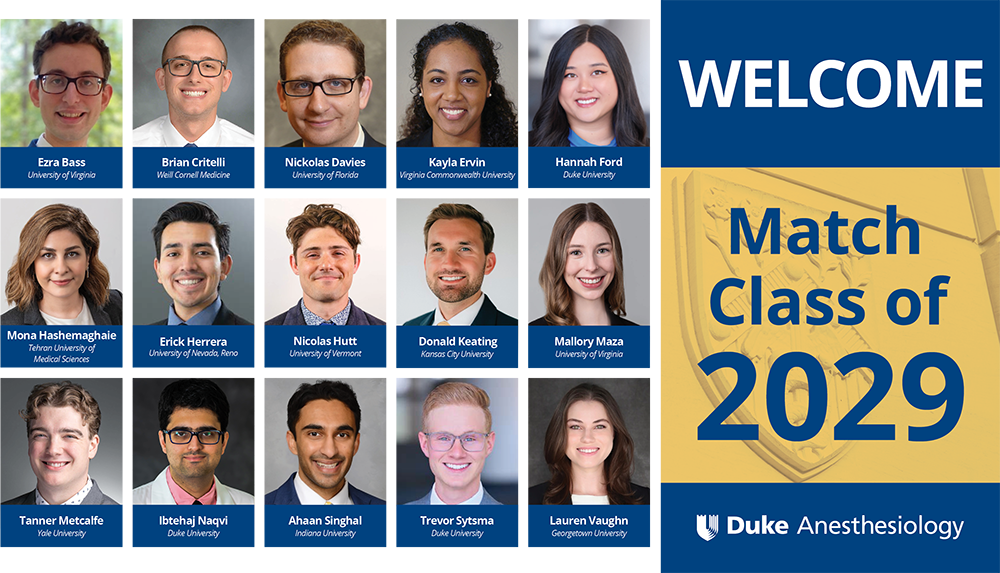
Resident Classes of 2025-2026
Interns




CA-1s
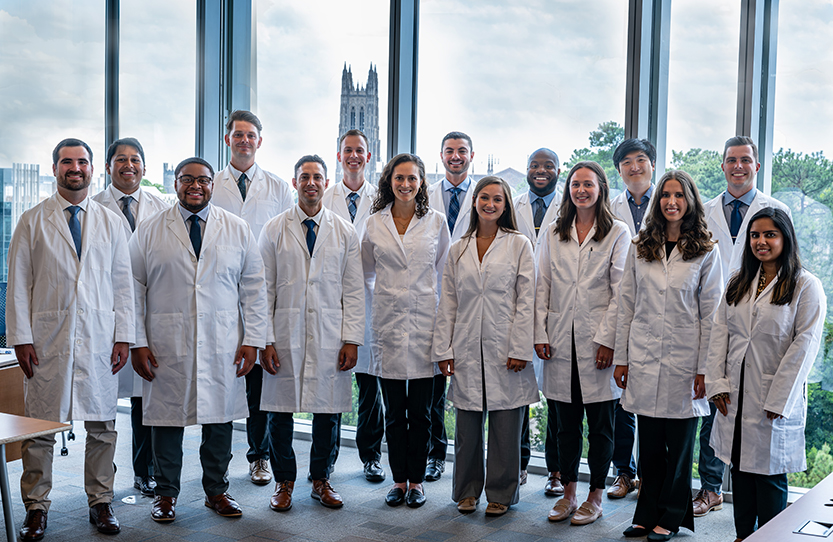
CA-2s
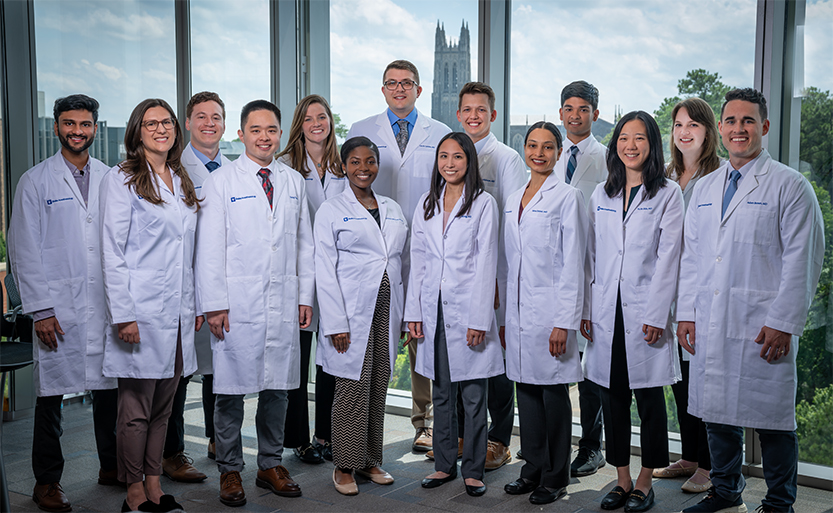
CA-3s
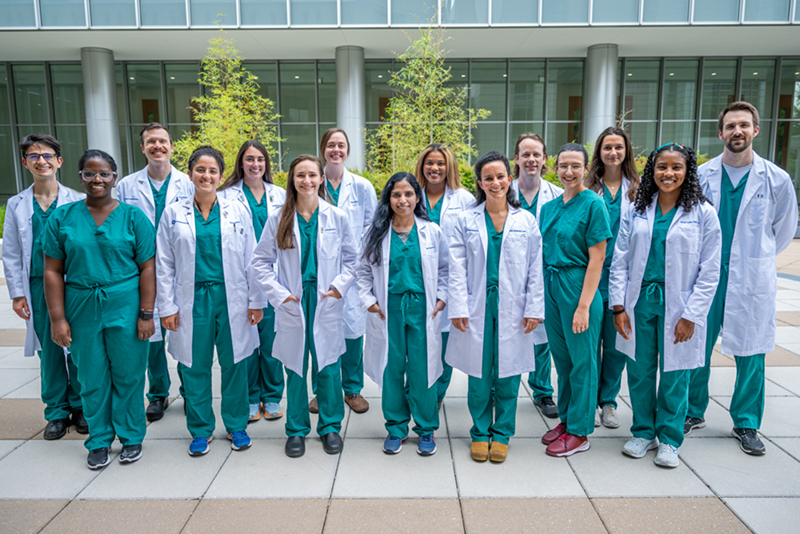
Residency Program Class of 2025
